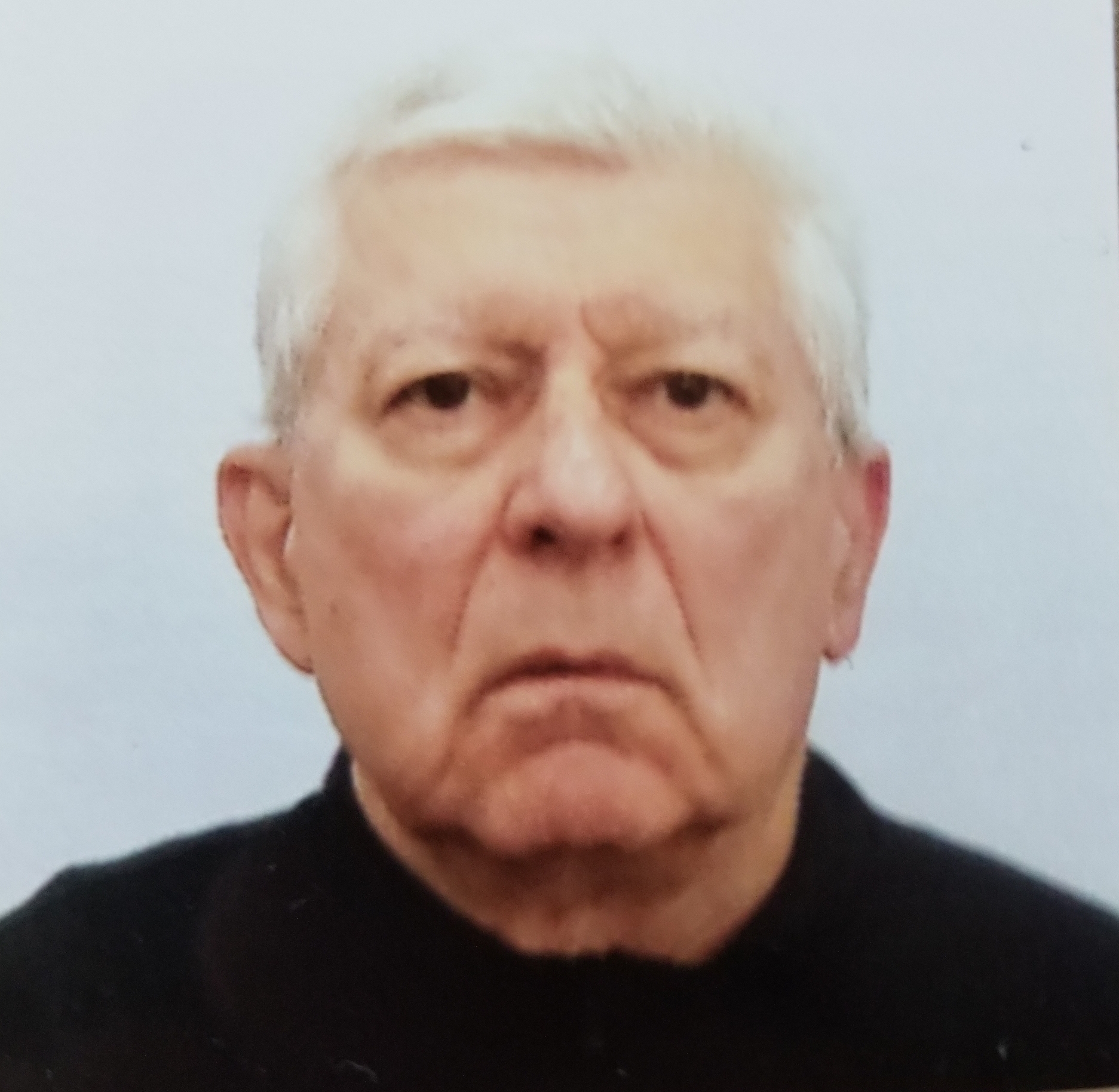
Title: Novel Formulation of IV Nitroglycerin (GTN) for Tolerance-free Continuous Dosing
Keynote Speaker
Dr. Wayne Kaesemeyer
Augusta Hypertension PC
USA
Abstract
The purpose of this paper is to review the involvement of mitochondria in the actions of nitroglycerin (glycerol trinitrate -GTN) and the redox disturbances underlying diseases it treats. The paper begins by explaining complex I as the initial site of formation of superoxide and the process whereby it leads to the development of glutathione dependent tolerance. Next, the paper describes new formulations for preventing tolerance. The paper ends by illustrating diseases that may benefit from treatment with novel glutathione based GTN formulations and treatment approaches.
Key words: nitroglycerin; glutathione; mitochondria; complex I; eNOS; nitric oxide; S-nitrosylation; superoxide; acute heart failure; right heart failure; refractory angina; NLRP3 inflammasome
Biography
Wayne Kaesemeyer MD, is an independent research cardiologist with a focus on vascular redox biology and preventing the activation of the NLRP3 inflammasome in the treatment of cardiovascular diseases. His work builds upon his research on the cause and prevention of nitroglycerin tolerance. Dr. Kaesemeyer has practiced as a hypertension specialist for 28 years and is board-certified in internal medicine. He has been the principal investigator in numerous clinical trials related to hypertension, lipids, and heart failure medications. His expertise extends to statin nitric oxide pleiotropy combined with inhibition of atp citrate lyase for use in targeting vascular inflammation to improving residual cardiovascular risk remaining after cholesterol lowering.

Title: 3D Printing in medicine: Technology overview and Drug Delivery applications
Invited Speaker
Ms Tisha Patel
The University of Adelaide
Australia
Abstract
The advent of technology has had an emerging effect in the pharmaceutical industry. It plays a significant role in healthcare sectors. The 3D printing technology has brought about a shift from the traditional drug manufacturing practices to highly customisable drug formulations. The article differentiates the types of 3D printers based on the methods of the material layering for the pharmaceutical product development. It gives an insight on the recent pharmaceutical research for 3D printing. Moreover, it addresses to the challenges faced in the healthcare and pharmaceutical fields which might hinder the adoption of technology and proposes solutions to these issues.
Biography
Motivated second-year Bachelor of Biotechnology student with a strong academic background, having completed one year at the University of Technology Sydney (UTS) and currently enrolled at the University of Adelaide. Proficient in molecular biology and genetic engineering, I possess practical laboratory skills and a solid foundation in biotechnological principles. Committed to ethical considerations in science, I am eager to contribute to impactful research projects and collaborative initiatives. Seeking opportunities to apply my knowledge, enhance my skills, and make meaningful contributions to the evolving field of biotechnology. Current student looking to join the workforce to gain real-world experience. Ability to complete tasks on time in both individual and team settings. Dependable and reliable, ready to learn and grow with your organisation

Title: Development of Polymer Nanocomposite Scaffolds for Tissue Engineering
Invited Speaker
Dr. Sabu Thomas
Mahatma Gandhi University
India
Abstract
Biodegradable polymer scaffolds are useful materials to integrate the femoral part of the implant with the bone, and provide a matrix for cellular growth. Synthetic biodegradable polymers can provide temporary scaffold for cell adhesion and expansion both in vitro and in vivo and guide tissue regeneration with defined sizes and shapes. The fibrillar structure is important for cell attachment, proliferation and differentiated function in tissue engineering. The structure allows for growth and is convenient for transport of nutrients. The synthetic polymers such as Polycaprolactone (PCL), Poly l-lactic acid (PLLA), and their copolymers have attracted wide attention for their biodegradation in the human body and are used for tissue engineering. Several methods have been practiced to create highly porous scaffold including fiber bonding, solvent casting/ salt leaching, gas foaming, phase separation and electrospinning. Out of which electrospinning is the simple and cost effective technique for producing nanofibers from polymer solution. Introduction of organically modified clay in polymers leads to different types of structures which include intercalated or exfoliated morphology. The nano reinforcement increases the mechanical rigidity, mobility, stiffness and biodegradability in biodegradable polymers. Moreover, it also increases the porosity of the polymer nanocomposite. Nanoparticle reinforced scaffolds are yet to achieve importance. In fact, they have wide range of interest in tissue engineering. Literature reports regarding nanoparticle reinforced scaffolds are very scant. Hence the present investigation will be interesting and will find application in tissue engineering in the foreseeable future. In the present talk the state of the art on the synthesis, morphology, structure, properties and applications of dual porous nanocomposite scaffolds will be presented.
Biography
Prof. Dr. Sabu Thomas is currently the Vice-Chancellor of Mahatma Gandhi University, Kottayam, Kerala, India. He is a Professor at the International and Inter University Centre for Nanoscience and Nanotechnology and Full Professor of Polymer Science and Engineering at the School of Chemical Sciences of Mahatma Gandhi University, Kottayam, Kerala, India. His ground-breaking research has covered the areas of polymer science and engineering, polymer nanocomposites, elastomers, polymer blends, interpenetrating polymer networks, polymer membranes, green composites and nanocomposites, nanomedicine and green nanotechnology. Prof. Thomas has received several national and international awards in recognition for his work Prof. Thomas has published over 1500 peer- reviewed research papers, reviews and book chapters. He has co-edited more than 210 books. Currently he is having an H index of 134
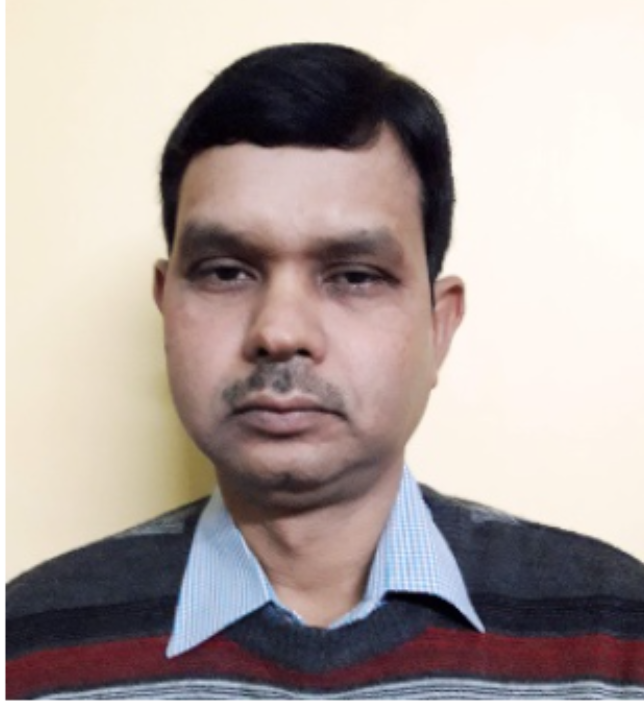
Title: Anti-Nipah virus activity of neoandrographolide from Andrographis paniculata by in silico methods
Keynote Speaker
Dr.Shyamapada Mandal
University of Gour Banga
India.
Abstract
Nipah virus (NiV) is an emerging infectious agent causing fatalinfection to humans, for which no specific treatment (or vaccine) is available. Therefore, the targetable plant-based drug discovery isexpected to be a novel approach to tackle NiV disease. The inhibitory efficiency, against NiV targets, of bioactive small-molecules obtained from a well known medicinal plant Andrographis paniculata has not been adequately studied. In the current study NiV-G (nipah virus attachment glycoprotein) has been targeted for computer-assisted drug discovery using A. paniculata phytochemicals: andrograpanin, andrographidine E, andrographin, andrographolide, deoxyandrographolide and neoandrographolide (NGLD). Favipiravir and ribavirin were used as the reference drugs for comparison. NGLD displayed strongest affinity to NiV protein, NiV-G by molecular docking. The molecular dynamic simulations studies confirmed the energetically stable complex formation between NGLD and NiV-G protein.
Favipiravir and ribavirin standards displayed lowest affinity to NiV-G. The phytochemicals used in the study had acceptable drug- likeness property and ADMET profiles. Taken together, the current findings suggest the potentiality of A. paniculata-derived bioactive compounds, mainly NGLD, as lead molecules for the discovery of anti-NiV therapeutics. Further, laboratory experiments are suggestive to authenticate the current in silico findings.
Biography
Dr. Shyamapada Mandal is Professor and Head of the Department of Zoology, and Dean(Science), University of Gour Banga, India. He is working on infectious diseases, probiotics, andgenomics and bioinformatics research. He did pre-PhD, PhD, and post-PhD research under theguidance of Professor Nishith Kumar Pal at the Calcutta School of Tropical Medicine, India. Hehas published 130 articles with eight book chapters. He is life member of IAMM and IASR,India, and fellow member of SASS, India. Eight national academic and research awards havebeen conferred to him. He has guided 58 post graduate students; supervised four MPhil and six PhD students, and supervising four PhD students. Professor Mandal is among the world’s top 2% scientists as per the survey of the Stanford University, published in PLOS (Public Library of Science) Biology (October, 2020). He is featured in the top 2% world scientists list for second, third and fourth consecutive times as published by the Stanford University-Elsevier BV (October, 2021, October, 2022 and October, 2023).
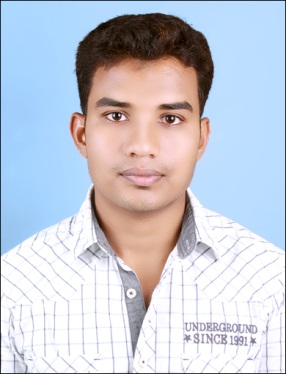
Title: Formulation, Characterization and Evaluation: Micellar Loaded Complex of Cuminum Cyminum to Treat Causing Disease of Respiratory infection
Invited Speaker
Dr. Rudra Pratap Singh Rajput
Royal College of Pharmacy Raipur
India
Abstract
Background: Respiratory infection (RTI) is a viral spreading disease and it transmits from individual to individual, particularly in youngsters and aged peoples. The treatments are available but have so many limitations.
Objectives: To overcome these issues, novel drug delivery (nanoparticle) based micellar loaded complex approach was adopted using cuminaldehyde (Cuminum Cyminum L.).
Methods: In this study, the micellar (CM) was prepared by mixing of cuminaldehyde and soya lecithin using anti-solvent precipitation technique and further the micellar loaded complex (CMLC) was prepared by loading of micellar (CM) in aqueous solution of chitosan.
Results: The optimized CMLC and CM were irregular particle shapes and crystalline structures, with a mean particle size of 279.10±0.02 nm, 296.24±0.10 nm and zeta potential of -8.18 mV, -8.77 mV, respectively. The % entrapment efficiency and % drug loading of CMLC (72.13±0.26 %, 06.46±0.01 %) and CM (89.09±0.20%, 08.05±0.19 %) was found efficiently. The in vitro release rate of CM (88.09±0.41 %) was slower than CMLC (89.02±0.06 %) in pH 7.4 phosphate buffer up to 24 h by diffusion process (Korsmeyer Peppas model).
Conclusion: Furthermore, CMLC has shown the potent in vitro antioxidant activity, susceptible antibacterial activity and significant anti-inflammatory activity as compared to CM against stress, microbial infection (S. aureus and E. coli) and inflammation which were causable reason for the respiratory infections. CLMC has shown the significant bioavailability and more efficient hematological parameters value on rabbit blood against the incubation of bacterial organism. CLMC may have the effective potential to treat causing disease of COVID 19 i.e. RTI.
Keywords: Respiratory infection (RTI), cuminaldehyde, Micellar, Evaluation Parameters.
Biography
Dr. Rudra Pratap Singh Rajput has completed his B.Pharm form CSVTU, Bhilai (Chhattisgarh) in 2012 then moved towards Maharashtra State to complete his M.Pharm in 2014 from Pune University, Pune. Further the Doctoral degree Ph.D was awarded by JSSAHER, Mysuru (Karnataka) in 2018. He has started his academic carrier as Assistant Professor from Jeypore College of Pharmacy, Odisha in Aug, 2018 and continued in Columbia institute of Pharmacy, Raipur (Chhattisgarh) since 29th April, 2019 to 17th Feb, 2023. Further He switched to Royal College of Pharmacy, Raipur (Chhattisgarh) on 18th Feb, 2023 and continuing till date. He has supervised 15 degree and 10 post graduation students to accomplish project dissertation work. At present 4 research scholars are pursuing their PhD under his supervision. He has more than 33 publication in SCI(E) indexed reputed journals. He also received an international travel grant from ICMR, New Delhi to present his work on international platform. He has more than 300 actively participatation in various national and international conferences. Also, he has organized two government bodies sponsored DBT, New Delhi and AERB, Mumbai national conferences for the students, researchers and academicians.
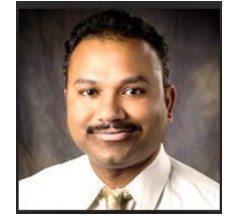
Title: Impact of simultaneous exposure to an environmental carcinogen and pollutant on skin.
Keynote Speaker
Dr. Ravi P. Sahu
Wright State University
USA,
Abstract
Human skin is constantly exposed to environmental insults, namely solar UV radiation (SSL) and pollutants such as benzo[a]pyrene (BaP). Due to the prevalence of these hazards in daily life, it is important to understand the effects of BaP, SSL, and ultraviolet B (UVB) exposure on skin tissue, and the mechanisms by which BaP and UVB/SSL mediate their effects, in order to design relevant strategies to mitigate their effects. Epidemiological studies indicate that increased exposure to these environmental hazards simultaneously can increase the risk of contracting human malignancies such as skin, mucosal, and lung cancers. Our previous studies demonstrated that exposure to UVB radiation induces the generation of microvesicle particles (MVPs) from human and murine skin in a dose-dependent manner. Notably, our studies have also discovered that these MVPs carry a potent phospholipid mediator, Platelet-activating factor (PAF) agonists. Importantly, these PAF agonists play crucial roles in mediating the effects of pro oxidative stressors, including UVB and therapeutic agents such as systemic immunosuppression and cancer growth in experimental models. To that end, our current studies sought to determine the effects of topical exposures to BaP, UVB, and SSL on MVP release from murine skin. The data demonstrated that these environmental hazards induce increased MVP release in a dose-dependent manner. While studies to determine the combined effects of BaP+UVB and BaP+SSL as well as the involvement of the PAFR and MVP are ongoing, the current studies suggest that PAFR agonists-laden MVP release is one of the possible mechanisms in mediating these hazards-induced effects.
Biography
Dr. Sahu is an Associate Professor in the Department of Pharmacology and Toxicology at Wright State University, Dayton, OH. His research is focused on determining the significance and mechanisms of pro oxidative stressors-generated oxidized lipid mediators in impacting cancer growth and the efficacy of therapeutic agents. He has given invited talks to various national and international scientific organizations, published several peer-reviewed papers, and serves as an editorial board member, academic editor, and ad hoc reviewer of several scientific journals.
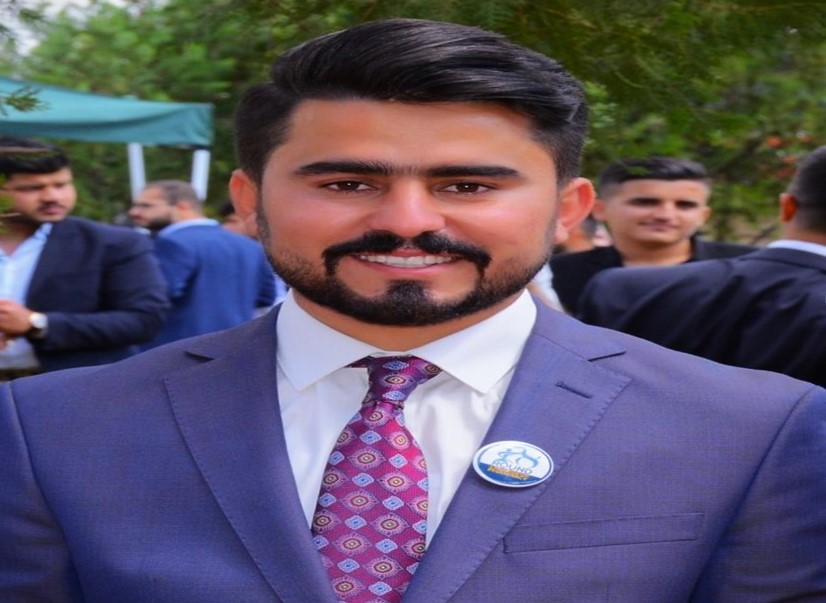
Title: The development of ternary and quaternary solid dispersion-based hydrotropic blends of atorvastatin calcium
Keynote Speaker
Dr. Suren Azad Ramadhan
Knowledge University
Iraq
Abstract
Objective: The major goal of this current experimental study was to use various hydrotropic agents in the formation of solid dispersion-based hydrotropic blends to improve the solubility properties of poor aqueous soluble drug atorvastatin calcium (ATV). Since, atorvastatin calcium has a solubility in aqueous solutions of greater than 0.1 mg/ml, which is very slightly soluble. When developing dosage forms for these medications, formulation scientists still face challenges.
Methods: In this study, twenty-two distinct binary, ternary, and quaternary formulations of ATV were prepared by employing five different hydrotropic agents (sodium benzoate, sodium salicylate, resorcinol, d-mannitol, and PEG 6000), and combining at least two hydrotropic agents in concentrations of 10% and 20% (w/v). Moreover, four different solid dispersions by the solvent evaporation method and physical mixture-based hydrotropic blends in the ratio of (1:2) have been formulated. The produced formulations were characterized using an FTIR analysis.
Results and discussion: According to the findings, binary formulations containing 20% (w/v) concentrations of sodium benzoate (SB), sodium salicylate (SS), and resorcinol (R) boosted the solubility ratio of ATV by 439.31, 689.57, and 106.21 folds, respectively. Furthermore, ternary formulations (FT14) and quaternary formulations (FQ18) resulted in the enhancement of ATV solubility by 938.45 and 995.12 folds, respectively. Ternary solid dispersion demonstrated the highest enhancement in solubility ratio by 87.68 folds and resulted in a higher dissolution rate of ATV than pure samples of the drug. Finally, FTIR analyses ruled out any interactions between medications and excipients by showing no noticeable shift in the peaks.
Conclusion: Solid dispersion-based hydrotropic blends can provide the production of the dosage forms of practically insoluble drugs with a favorable enhancement ratio in solubility.
KEYWORDS: Atorvastatin calcium, Solid dispersion, Hydrotropic blends, Dissolution rate, Physical mixture.
Biography
My name is Suren Azad Ramadhan, and I am a pharmaceutical specialist in pharmaceutics. I hold a Bachelor's degree in Pharmaceutical Sciences, and a Master's degree in Pharmaceutics, and I am currently pursuing a PhD in the same field. Additionally, I am a health awareness activist. I work as a Lecturer of Industrial Pharmacy, Cosmeceutical Sciences, and Biopharmaceutics & Pharmacokinetics at the College of Pharmacy, Pharmaceutics Department at Knowledge University. Since 2016, I have been active in the Kurdistan pharmaceutical market, assuming various roles until I arrived at my current position as a Product and Marketing Manager in March 2021. Throughout my professional career, I have had the privilege of being involved in numerous national and international symposiums and conferences, taking on various roles such as attendee, speaker, and member of the organizing committee. These experiences have provided me with valuable opportunities to expand my knowledge, network with professionals in my field, and contribute to the advancement of research and innovation.
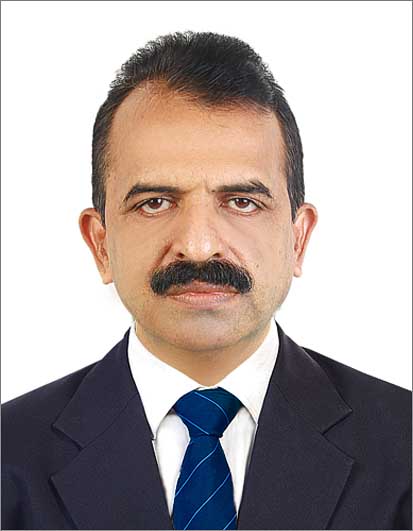
Title: Paracetamol is the most unscientific and dangerous drug for fever. Anyone can create a fever within hours using antipyretic objects.
Keynote Speaker
Yacob Mathai Kunnathazhath
Marma Health Centre, India
Abstract
Most people mistake fever for high temperature and think it is dangerous and take paracetamol to reduce temperature as fever is determined by checking temperature. A high temperature is not a fever, but hyperthermia, which is the opposite of fever.The only cause of fever is inflammation. But hyperthermia is high heat. We can create a fever within a few hours by antipyretics. It cannot cause hyperthermia. Hyperthermia can be created within seconds by using hot objects. Hot objects of the same temperature as fever or heat-producing substances cannot cause fever in any living being. Antipyretics cause prolonged infection, which increases disease and death. Paracetamol is an antipyretic drug.Decreased blood flow due to severe inflammation is the sole trigger for fever. Any substance that is cooling or reducing temperature (antipyretic) is a fever stimulant because it increases inflammation and reduces blood flow. Antipyretics are the only substances needed to induce fever in any organism. Antipyretic fever treatment never reduces inflammation but increases it.A decrease in temperature is not enough to reduce the fever, all substances and their functions, which only increase and decrease during fever, must return to the state they were in when there was no fever.Any warm or heat-increasing substance (pyretic) is a fever reducer because it reduces inflammation and increases blood flow. Pyretics are therefore the only substances necessary to cure fever in any organism.Any warm or heat-increasing substance (pyretic) is a fever reducer because it reduces inflammation and increases blood flow. Pyretics are therefore the only substances necessary to cure fever in any organism.There is a fundamental contrast between the basic action of fever and the basic action of paracetamol. The essence of today's fever treatment is fever can be cured by using fever-creating substances. A feverish temperature works against lack of blood flow and it increases blood flow.Paracetamol is given to reduce prostaglandin E2. It is not a fever-causing substance. It has hyperthermic and anti-inflammatory properties. It is more abundant after the inflammation in the body. From this, the immune system produces prostaglandin E2, which reduces inflammation and increases blood flow to the body or organ, making the body healthier and live longerProstaglandinE2 is found in the body during fever, similar to the airbag used to protect passengers in a car accident. Paracetamol is given to the patient to eliminate the prostaglandin E2 found in fever, just as those who do not know the purpose of an airbag in a car accident disable it thinking that someone will die in a serious accident because of the airbag. As a result, the body swells, blood flow decreases and the patient dies. The medical book states that paracetamol may cause fever, neutropenia, thrombocytopenia, nephropathy, and skin reactions 1. This is not a side effect of paracetamol, but its proper function.Paracetamol is given again to relieve the fever caused by taking paracetamol. If it is said that the medicine used to reduce the temperature of the fever itself causes the fever, the scientific and authenticity of that medicine are being questioned here. There is no science or technology like this anywhere in the world. Researchers have found that even a single dose of paracetamol can reduce the levels of glutathione, a chemical in the body that reduces inflammation2. Yet paracetamol is classified as an anti-inflammatory.Paracetamol destroys all the protective substances our immune system makes when we get sick. It decreases prostaglandinE2, Glutathione, interferon, platelets, WBC, etc,… If the fever temperature is reduced by giving paracetamol, substances produced only during fever will increase. Paracetamol does not reduce fever, the cause of fever, morbidity, or mortality, all of which are increased by paracetamol. Even for diseases that would have cured themselves due to the action of our immune system, using paracetamol can cause inflammation, reduced blood flow, and death.Antipyretic therapy is a necessary and appropriate treatment for hyperthermia and not for fever. No one has scientifically proven that antipyretic therapy, which reduces the heat of a fever, is an appropriate treatment for fever and inflammation.Depletion of ProstaglandinE2 and glutathione, which reduces inflammation, can also increase inflammation. These fundamental errors have led to the treatment of fever with antipyretic agents. No such treatment or science was found even in the Stone Age.No other illness or symptom is more unscientific than justifying the administration of paracetamol for fever. There is no one percent evidence that paracetamol increases blood flow by reducing inflammation and helping the immune system in any way. At the same time, there is 100% evidence that paracetamol increases inflammation, reduces blood flow and destroys the immune system.Prescribing paracetamol for fever is murderous as it depletes substances such as prostaglandin E2 and glutathione which increase blood flow and sustain life.Conflicting opinions on the effectiveness of various antipyretic treatments can be found in various journals.
Biography
A practicing physician in the field of healthcare in the state of Kerala in India for the last 35 years and very much interested in basic research. My interest is spread across the fever, inflammation and back pain. I am a writer. I already printed and published Ten books on these subjects. I wrote hundreds of articles in various magazines. After scientific studies, we have developed 8000 affirmative cross checking questions. It can explain all queries related to fever. After scientific studies we have developed 8000 affirmative cross checking questions. It can explain all queries related with fever. My 10 articles published in various journals.
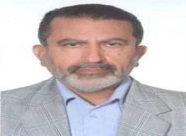
Title: Study of the Iron Chelating Effect of Green Tea in Smear Positive TB Patients using Sputum Smear, Serum Malondialdehyde and Blood Iron Indices
Invited Speaker
Prof. Shahryar Eghtesadi
Azad University
Iran
Abstract
Green tea with possessing iron chelating properties can be useful in TB treatment and management. We studied the effect of green tea consumption on iron status and improving process of pulmonary tuberculosis treatment (accelerating the negative sputum smear, reducing the level of oxidative stress). Following the approval by Ethics Committee for Human Studies of Golestan and Tehran Universities of Medical Sciences and also obtaining the written consent of patients , this double-blinded randomized clinical trial study, was conducted on patients TB, who were assigned randomly to the intervention group (41 patients) receiving 500 mg catechin of green tea extract and the control group (39 subjects) receiving placebo for two months, since the beginning of concomitant anti-TB treatment . Sputum evaluation was carried out on three slides using the Ziehl Nelson method. At first, the demographic and dietary intake data were obtained. . After obtaining 10 ml of venous blood, Hemoglobin (Hb), Transferrin, Ferritin, Total iron binding capacity (TIBC), Iron and Serum malondialdehyde (MDA) were measured at the beginning and end of the study. Sputum samples were collected from the third week (every 10 days) and the reduction of microbial load was also tested until sputum smear became negative.Data were processed using independent and paired t-test, McNemar, Wilcoxon, Kaplan-Meier, Log rank test and Cox regression model. P-value was taken significant as <0.05.Average daily energy intake of patients was 1518±431 kcal, distribution of which was as follow: carbohydrates (58%), protein (17%) and fat (22%).Vitamin D and Zinc intake of patients were less and iron intake was higher than the DRI. Weight changes in both groups of placebo and green tea had tendency of increase with a significant difference at two and six month follow ups (p˂0.0001). However, there were no significant changes due to intervention compared to placebo. Sputum conversion time (days) was 52.5± 24.5 (median= 53 days) and 40.6 ± 22.5 (median= 29 days) in placebo and catechin groups, respectively. The proportion of patients in the green tea group based on criterion of ; the short duration of being negative sputum smear; was significantly higher than the placebo group (p=0.032). To measure the mean of iron status after intervention, ANCOVA test showed mean difference level (Pvalue) in both groups for Hb, iron, TIBC, transferrin and ferritin as of: 0.004, 0.56, 0.65, 0.38 and 0.16, respectively which means that increase of hemoglobin in the green tea group was significant compared with the placebo group. There was just a 9.2 nmol/ml difference between the two groups for MDA at the beginning of study, which was not statistically significant (p=0.078) whereas, it was increased to 24.8 nmol/ml after the intervention, indicating a significant difference (p<0.001). The decline value was estimated -45.45 ± 14.69 nmol/ml for catechin group and -19.91 ± 18.38 nmol/ml for placebo group. In conclusion green tea can systematically reduce the inflammatory elements and oxidants (decrease of MDA tiand damage in the lung is reduced, and adjunct to antimicrobial therapy, accelerate sputum smear conversion, disease amelioration and treatment improvement. Finally, given the higher iron intake despite of lower micronutrients and macronutrients in diet of our patients, and considering the iron effect on mycobacterium survival and the incidence and exacerbation of inflammatory complications in patients, it seems that policy of mandatory flour fortification with iron, especially in provinces such as Golestan, must be viewed cautiously and its further implementation being revised meticulously.
Biography
Dr. Shahryar Eghtesadi received Bachelor degree in Nutrition Science and Food Chemistry 1975, from Shahid Beheshti University of Medical Sciences, Tehran; MSPH degree in Nutrition, 1977, from Tehran University of Medical Sciences, Tehran and PhD from University of California at Davis(UCD), USA, in Nutrition (1985). He served as Visiting Scientist in USDA Human Nutrition Research Center on Aging (HNRCA), at Tufts University ,Boston, USA (1994-1995); Full professor of Tabriz, Iran and Tehran Universities of Medical Sciences and currently serves as Professor of Azad University, Science & Research Branch . He was the chairs of Departments of Nutrition and Biochemistry, Biochemistry & Clinical Nutrition, Public Health Nutrition and Nutrition in aforementioned Universities. Also Served as Associate Dean and Dean of School of Public Health & Nutrition and School of Public Health of Tabriz and Iran Universities of Medical Sciences respectively.He was selected as distinguished professor and Scientist in preceding universities. For long and extended period of time, experienced teaching various courses in nutrition in undergraduate, graduate and postgraduate and international Bureau programs and directed many projects and dissertations of MS and PhD programs and Published numerous peer reviewed articles in journals and also edited several books and finally served as Principal Investigator of World Bank Project for Capacity Building in Nutrition in Iran.
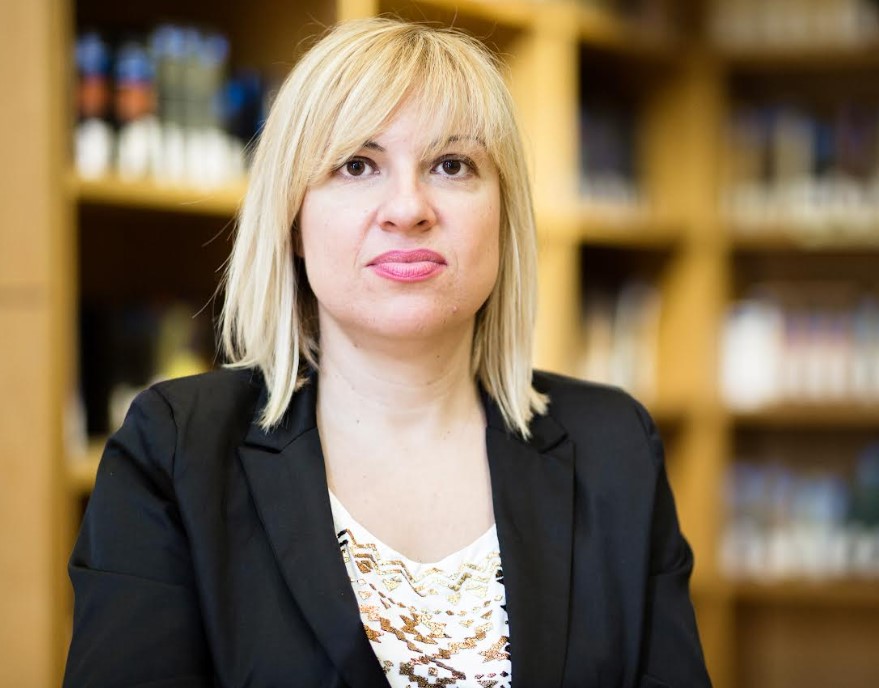
Title: Immunology & neuropsychological performance in Cancer patients
Invited Speaker
Dr. Kalliopi Megari
Aristotle University of Thessaloniki
Greece
Abstract
Brain fog so called as Post chemotherapy cognitive impairment (PCCI), is referred to a decrease in neuropsychological performance of neurocognitive measures after chemotherapy for the treatment of cancer. Chemotherapeutic drugs are often affecting both normal and cancer cells and the cause of cognitive impairment observed in some individuals following chemotherapy treatment. Breast cancer patients complain about cognitive difficulties during and after cancer treatment. We investigated the manifestation of cognitive impairment related to chemotherapy, before chemotherapy (T1), immediately after chemotherapy-1 day (T2) and 6 months later (T3), among 187 adult patients with different types of cancer (breast, colorectal, prostate and thyroid cancer). Cognitive functions were assessed, such as attention and working memory, visuospatial perception, executive functions, complex scanning and visual tracking, as well as short and long-term memory using a battery of neuropsychological tests. We had an assessment of emotions, such as anxiety, depression, positive and negative mood to investigate the emotional functioning of cancer patients. Results revealed a statistical significance in performance, immediately and 6 months post-chemotherapy (T3), although no statistically significant differences were found between the groups in any of the neuropsychological test, before chemotherapy. Patients showed lower performance immediately post-chemotherapy (T2) that remained stable 6 months post-chemotherapy (T3), compared to T2 in all cognitive domains (p<0,001). Patients with breast cancer showed significantly lower performance on all cognitive domains compared to other patients. In addition, all patients had a lower performance at T2, which means low emotional functioning with no statistical significant changes. At T3 all patients, had an increased performance with increased emotional functional 6 months post-chemotherapy. Cognitive change that can be detected with repeated testing is essential for an accurate interpretation of neuropsychological performance in studies with cancer patients.
Keywords: Brain, Neurocognitive functioning, brain functioning, Neurocognitive performance, cancer patients
Biography
Dr. Kalliopi Megari is an experienced psychologist working in the hospital & health care industry. She is a lecturer at University of Western Macedonia in Greece. Skilled in Clinical Neuropsychology, Clinical Research and Learning Disabilities. Graduated from Aristotle University of Thessaloniki and attended further education from University of Macedonia, in people with special needs and disabilities. She holds undergraduate degrees in Nursing and Psychology, as well as a Master’s and a PhD in Neuropsychology from Aristotle University of Thessaloniki. She has many years of experience working with chronic disease patients as well with people with disabilities. Her work has earned her many prestigious international awards. She has given lectures at Aristotle University of Thessaloniki and University of Warsaw. She is postdoctoral researcher and has published more than 10 research articles in journals. She is the Global Engagement Representative of International Neuropsychological Society, General Secretary of the booard of directors and member of the Ethics Committee of Hellenic Neuropsychological Society.
“ Will be updated soon...”
“ Will be updated soon...”
+91 9491 456 452
7-89-1-18, NVR LAYOUT, Madanapalle, Andhra Pradesh 517325, India
About Us
Global Scientific Guild organizes conferences and webinars to promote quality research and real world impact in an atmosphere of true international co-operation between scientists, doctors, professors, practitioners, engineers and industry by bringing together the world class renowned personalities to discuss the latest developments and innovations at one common platform.